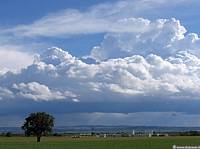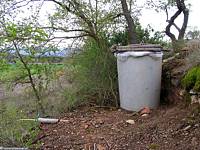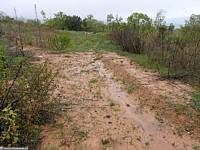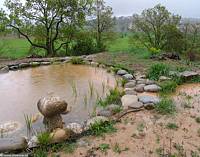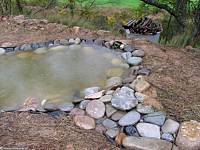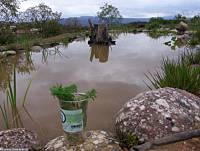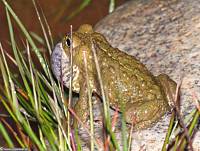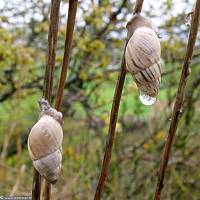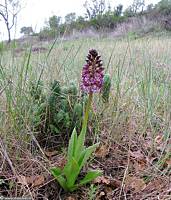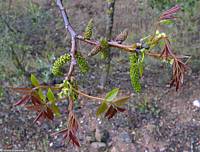|
|
Nature
Switched On
|
|
|
introduction |
2008 April 19 & 20, Saturday & Sunday Spain has been placed in a corridor
of depression fronts these days. During our stay at the weekend it
was raining almost continuo
As it was raining so much I took the opportunity to
study and check the water flow through the drains, ponds and
deposit. I dug some special drains around the deposit to avoid the
accumulation of rainwater there. |
|
|
The water deposit with the improvised cover of
plastic (against mosquitoes and dirt and in summer also against
evaporacion) and woodsticks (against
animals). |
||
|
Fortunately the water that arrived in the second pond via the stone covered canal was a lot clearer than the water in the first pond. The many stones will probably filter part of the dirt and when plants start to grow between the stones the effect will even be bigger. Perhaps I will introduce some more gravel to stimulate this proces.
|
||
|
Almost bare soil but with promising seedlings. |
||
|
The 'café con leche' entering the first pond. |
The (clearer) water entering the
second pond. Notice the outlet, which was raised a bit to increase
the water level. Sunday 14:41 |
|
|
In my enthusiasm for stimulating plant life, I had some bad
experience with the buying of some species. Our ponds
have still very few oxygenating submersed plants so when I saw some
of them in a garden centre I decided to buy them.
I had also bought Spanish stonecrop (Sedum hispanicum)
and this time I had paid attention to the scientific name and
supposed that it was native for Spain. Again a failure: despite its
name it comes from the Eastern Mediterranean. But it has become
'native' in a couple of European countries and its vigour
has nothing to do with the aforementioned species so we planted them
in the rock garden. |
||
|
The malicious product in question: |
||
|
With this photograph of a toad which I took with flashlight in the
darkness, I was able to identify it: the Natterjack toad (Epidalea
calamita, formerly Bufo calamita). It's
typical for recently formed pools and ponds with little vegetation,
which it finds with its typical running gait (they don't
|
||
|
A croaking Netterjack toad with
the typical yellow line on its back. Saturday 21:41 |
||
|
This species is also in its correct niche: calcareous, sloping grasslands in relatively warm and dry climates. It's Zebrina detrita ('Zebra snail') and is omnipresent on the terrain.
|
||
|
Zebrina
detrita on some dry stems of Picris
hieracioides. Another argument for not cutting all those dead
stalks of grassland plants (at the same time). |
||
|
Some 7 Lady orchids (Orchis purpurea), which I
reported on 20 March 2008,
started to flower on dispersed places but generally on the middle
terrace. I still discover new rosettes and their total number must
be over 50 now. |
||
|
Orchis purpurea on the middle,
eastern terrace. |
Flowering and unbuttoning of
Juglans regia. Sunday 9:52 |
|
|
introduction
|
|
